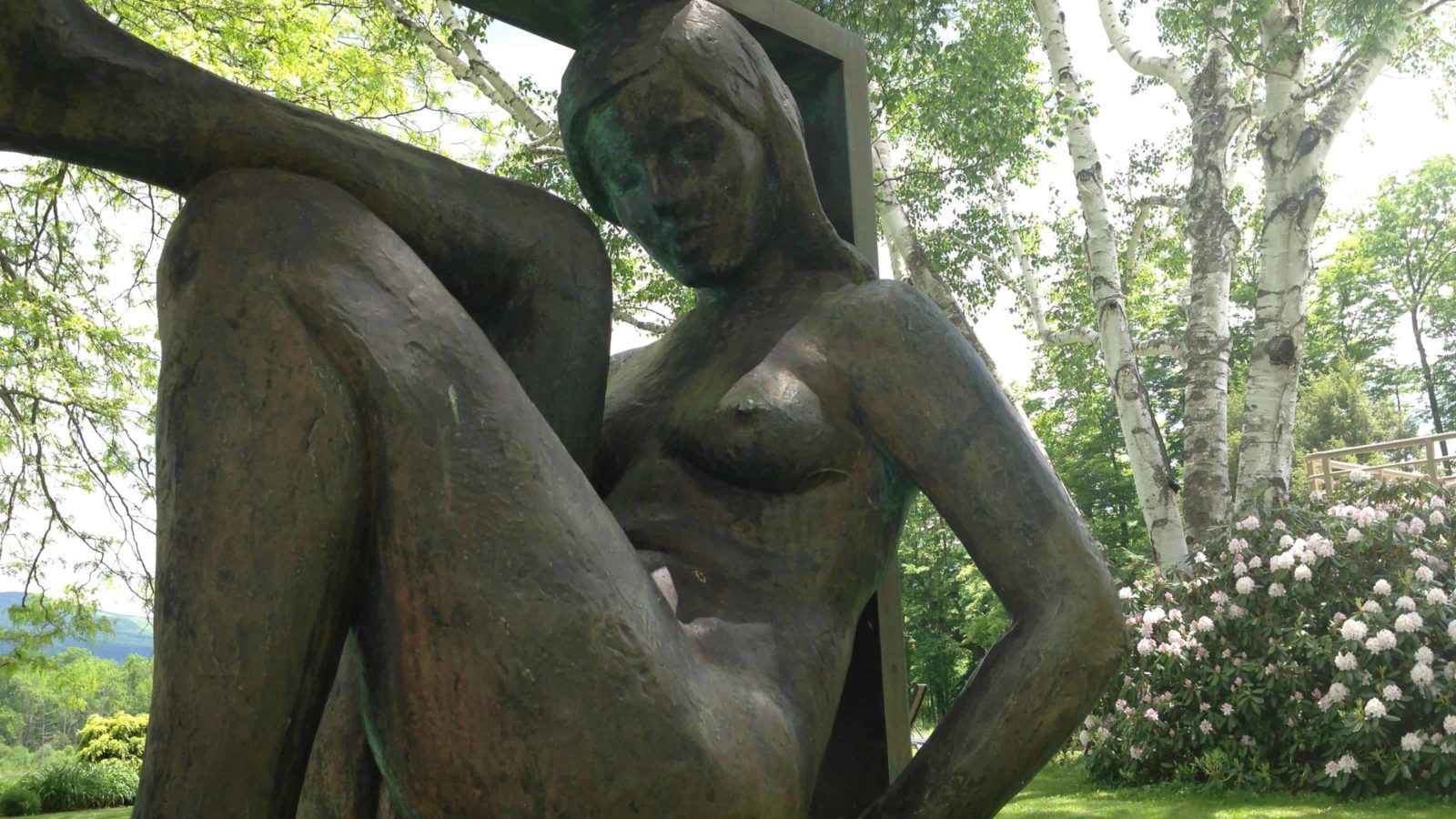In the Folly, bright panels of Modern paintings hang on the curved stone wall behind the couch and a broad window looks out across the pond and the hayfields. On the lawn bees hum in the azaleas, and a metal sculpture of a woman looks over her drawn-up knees to the mountain ridge.
Nature and art mingle at Field Farm in Williamstown — in the modernist buildings and modernist art and walks through the fields and woods to look for bobolinks and kestrels, wildflowers and butterflies.
This mingling is built into the house.
“Every door you open, you are drawn out through the picture windows into the view,” said Ole Retlev, innkeeper of the Guest House at Field Farm. The Trustees of Reservations maintains the property and trails, open to the public sunrise to sunset all year, and runs the house as a Bed and Breakfast, and they will open the Folly for tours occasionally through the summer and fall.
It began as a private home. Lawrence Bloedel came in the 1930s from Seattle to Williams College, Retlev explained. Bloedel loved Williams, and he met his wife, Eleanor, while he was a student there. They settled in Williamstown, and in the mid-1940s, when the Field brothers put this land up for sale, the Bloedels bought it.
To design their new home they first contacted Frank Lloyd Wright, Retlev said. They liked the Bauhaus school and Wright’s ideas.
In post-World-War-I Germany, Bauhaus designs called for simple form, even to mass-produced standardization, and the school blended art with architecture. In America, Wright was developing a philosophy of organic architecture: Buildings should fit into the landscape around them — they should act as part of the landscape. He also wanted a building designed organically, as a system with many parts and every element part of the design, from windows to chairs.
Wright and the Bloedels disagreed on the design for their house — they wanted to direct the plans minutely, Retlev said — and the Bloedels turned to Edwin Goodell, who worked for a firm outside Boston and had designed several buildings on the Williams campus.
But Wright’s influence appears in open spaces and rooms flowing into one another, long flat stories, and expanses of glass — as in the wide windows in the curved walls of the folly, so that a guest sitting on the sofa looks out across the pond to the mountains.
And art blends with architecture and with landscape, said Dyan Wiley, who served in 2014 as Trustees of Reservations’ engagement manager for the West Region.
In keeping with the spirit of the place, she wanted visitors and locals to rediscover Field Farm.
“It’s so under-the-radar,” she said. Family members who had grown up in Williamstown did not know how to find it.
Retlev agreed. Outside of regular visitors walking their dogs on the trails, he often finds that near neighbors don’t know the property is there.
On select Saturdays the Trustees opens the folly for tours and conversations about its architecture — and art.
Bloedel worked at Williams as a librarian, Retlev said. He loved books, and a Williams art professor, a close friend, encouraged a love for art. Over time, the Bloedels gathered a substantial collection of up-and-coming artists.
When they died, they left half of their collection to the Williams College Museum of Art and half to the Whitney Center for the Arts in New York City. Field Farm now has about 90 percent of its original furniture and 12 sculptures on the grounds, and in partnership with Williams artwork rotates into the public rooms of the Guest House and the Folly.
Now, on sunny days, today’s up-and-coming artists can walk on his land, take photographs in the early light, and sketch his round rooms or the veining in a leaf, the line of a stem of orchard grass or the yellow sepals of Indian Poke.
I first visited Field Farm in the summer of 2014 and wrote this story for Berkshires Week & Shires of Vermont in my time as editor there. I have updated it to post here. In the photo at the top, Bronze sculpture rests in the garden at Field Farm. Photo by Kate Abbott

